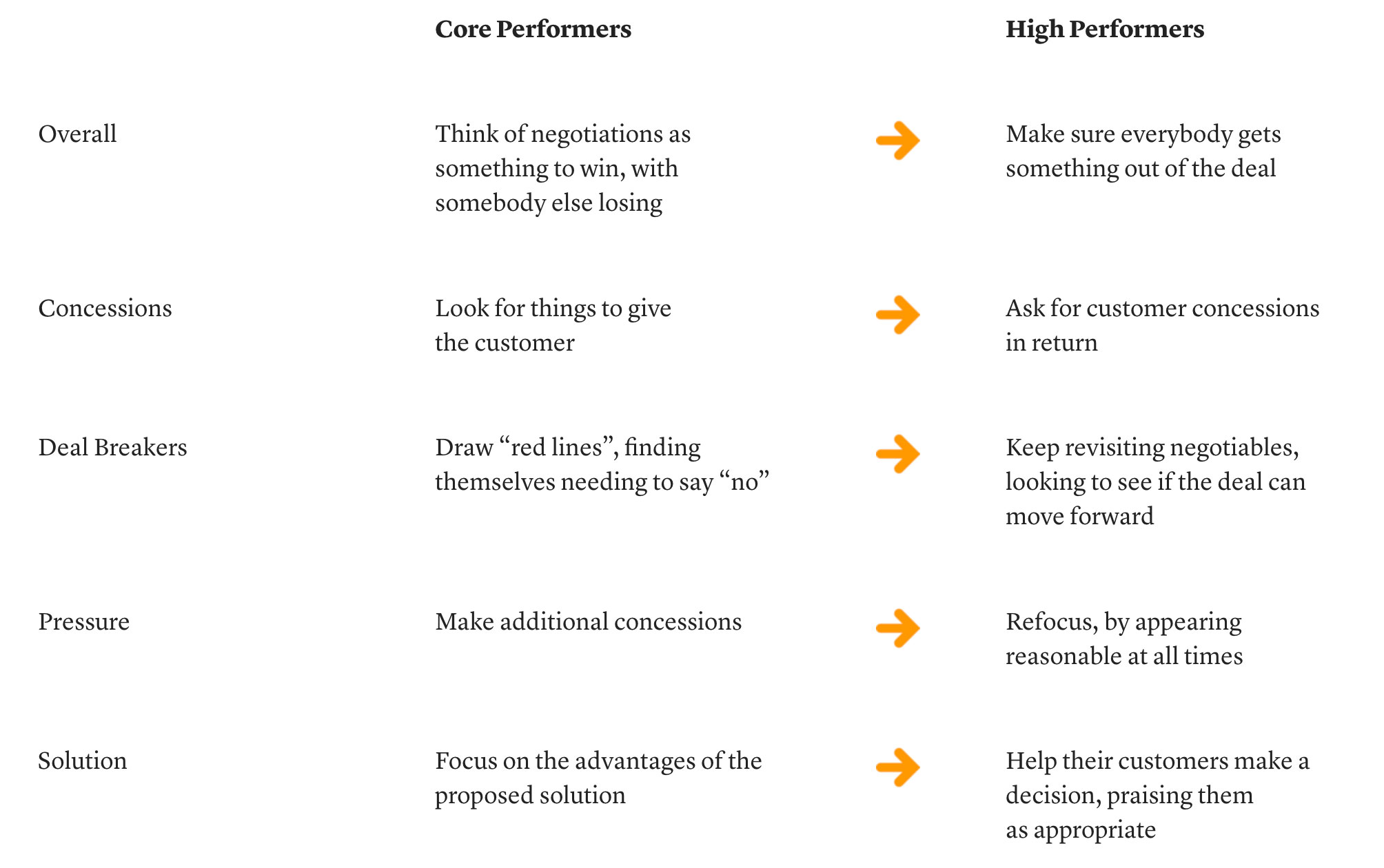“The first step is the hardest”. It’s what we say to encourage each other to get going. The same is true in sales. Shifting the customer’s initial focus away from status quo is the first step and is often the hardest part in a complex B2B sale.
But in commercial negotiations, a purchasing organization worth its salt will make each negotiation harder than the last, throwing one curveball after another. Having witnessed the product in action, they know exactly what worked and what didn’t. And they always have tricks up their sleeve. If you’ve ever had your proposal forwarded to your competition you know what I’m talking about. It’s no wonder sellers become superstitious and cynical even when buyers assure them they have an advantage.
Given the high-stakes tenor that surrounds negotiation ‘moments’, there is no shortage of advice on what to do. A quick Google search reveals 100s of books, full of perfectly good advice. But here’s the catch: No one can possibly follow all of it.
Challenger believes in a different approach to negotiation. We interviewed high performers and conducted studies of salespeople to learn what works and what doesn’t in negotiation “moments”. What stood out was the dramatically different approach high performing negotiators take relative to their core-performing peers.
To summarize, core performers approach a negotiation as one might approach a debate: a contest you must win at somebody else’s expense. They get caught up trying to manage their own dignity and resorting to gambits, instead of staying the course and appropriately managing tension. They make more statements and ask fewer questions. The following table identifies the most important of these differences:
 It’s an over-simplification, but what we found is that high performers do not suffer from the same Torschlusspanik that their peers struggle with. This German word denotes the panic felt as the gates are about to close. Ironically, the closer a deal, the more tempting it is to start making concession upon concession. Anything to attain the prize.
It’s an over-simplification, but what we found is that high performers do not suffer from the same Torschlusspanik that their peers struggle with. This German word denotes the panic felt as the gates are about to close. Ironically, the closer a deal, the more tempting it is to start making concession upon concession. Anything to attain the prize.
High performers, on the other hand, maintain resolve by having a greater reservoir of responses to pull from when faced with difficult customer demands. This is what allows them to keep the dialogue going whatever curveball they’ve been thrown.
The cure to Torschlusspanik, Challenger has found, comes from helping the entire sales force accomplish the following:
They need to internalize the economic value delivered to individual customers so that the sales force can both set ambitious goals and maintain the constructive tension a critical negotiation moment demands.
They need to creatively identify the negotiables that will allow them to deliver value without resorting to price concessions.
Last, they need to recognize in-the-moment curveballs: to keep their cool, cheerfully ask clarifying questions, and ignore what’s often quite performative bad behavior by buyers.
To help sellers everywhere, Challenger has compiled some of these curveballs as a series of short, animated videos. We hope they’re helpful.
Challenger has a lot more to share around our negotiation offering in 2021, both available today and coming in the next few months. Please visit www.challengerinc.com/negotiations to learn more.
Challenger, Inc.
Challenger is the global leader in training, technology, and consulting to win today’s complex sale. Our sales transformation and training programs are supported by ongoing research and backed by our best-selling books, The Challenger Sale, The Challenger Customer, and The Effortless Experience.
More from our blog
3 Challenger Skills That Boost Sales Rep Productivity and Motivate Buyers
Sales leaders everywhere are looking for ways to improve sales rep productivity. But productivity isn’t just about efficiency—it’s about…
Sending Commercial Teaching Messages That Inspire Action—Not Anxiety
How to Build Tension in Your Commercial Teaching Message In B2B sales, the most powerful messages aren’t horror stories, they’re dramas with a clear…
The Next Era of Challenger Selling: Skills That Will Shape the Future of Sales
In 2020, selling changed overnight. Buyers went quiet, priorities flipped, and digital interactions replaced boardroom handshakes. Everyone talked…
What are you waiting for?
Transform your sales team.
The best companies grow, and grow fast, by challenging customers, not by serving them.




